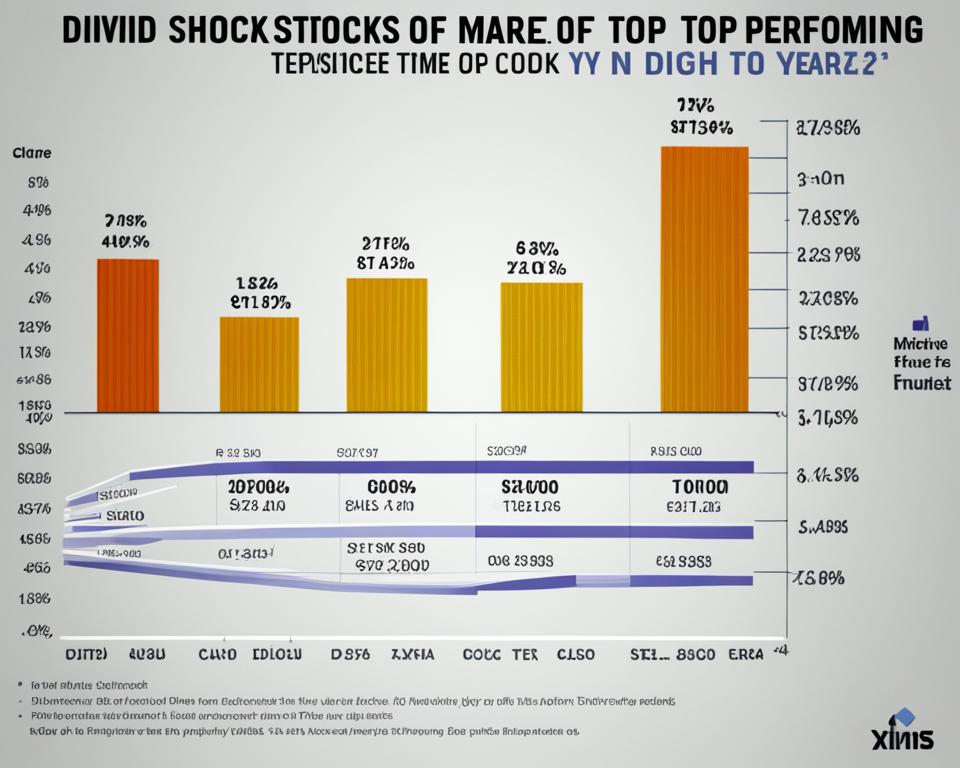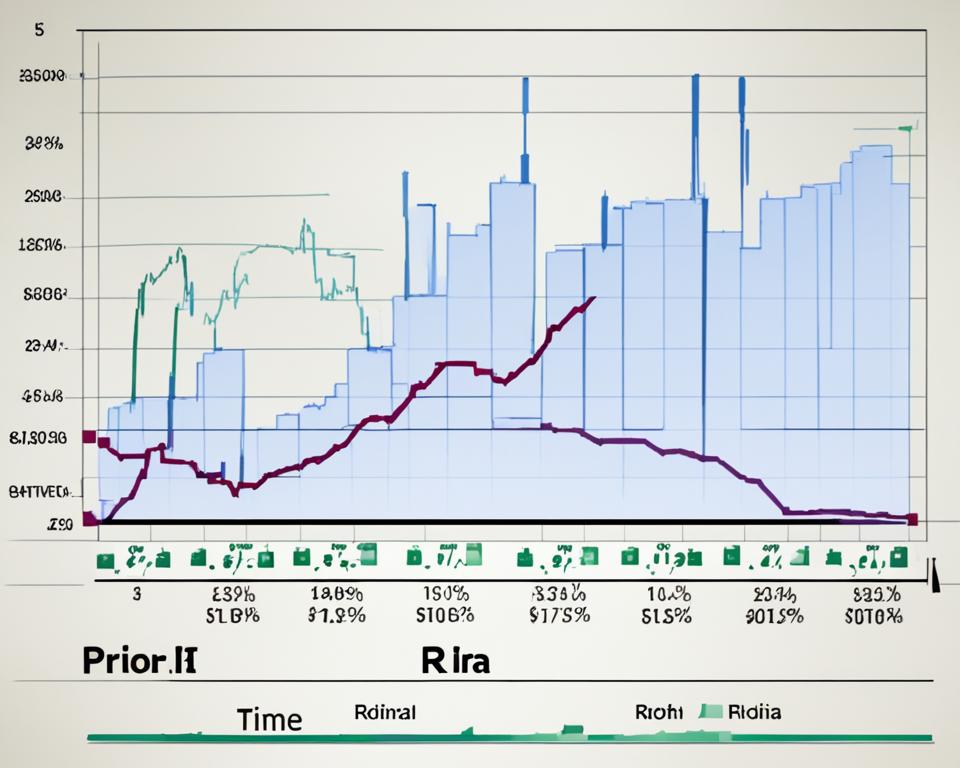For investors pursuing robust income strategies, highest-yielding dividend stocks play a crucial role in fostering strong portfolio performance. Being selective in identifying high-yielding dividend stocks that demonstrate durability and fair company valuation can serve as a winning strategy, according to industry research powerhouse, Morningstar.
Investors are encouraged to delve deep into the realm of dividends , eschewing potential traps and focusing instead on growth stocks wherein the management has demonstrated a resolute commitment to supporting dividend strategies. In most instances, the reliability of dividend payments correlates reliably with economic moats, proving the benefits of such a strategy to the prudent investor.
Income investing, especially with an emphasis on undervalued, high-quality dividend stocks, can deliver substantial income. A prime resource for investors is the Morningstar Dividend Yield Focus Index, which provides an up-to-date list of top dividend stocks based on yield, financial health, and stock valuation. Currently, as of February 2024, many top performers listed hail from industries like oil, gas, and consumer sectors, signalling strong payouts and undervaluation.
Key Takeaways
- In pursuit of robust income strategies, highest-yielding dividend stocks can greatly contribute to strong portfolio performance.
- Investors are advised to be selective, avoiding dividend traps, and prioritize dividend stocks where management is committed to supporting dividend strategies.
- The durability of dividends often links with the company’s economic moats.
- Investing in high-quality, undervalued dividend stocks can result in substantial income, thereby constituting an integral part of the best income strategies.
- The Morningstar Dividend Yield Focus Index is a key resource to trace top dividend stocks based on yield, financial health, and stock valuation.
Understanding Dividend Yield and Its Importance
In the exciting and ever-evolving world of investment, dividend yield stands as a significant metric that can illuminate the path towards efficient dividend investing. Essentially, dividend yield specifies the percentage of a company’s share price that is returned to shareholders as dividends. As such, it offers an effective tool for assessing the income-generating potential of specific stocks, thus assisting investors in picking the top dividend stocks.
However, it is imperative to analyze the dividend yield in conjunction with the overall health of the company as well as with the prevailing market conditions. While a high dividend yield can often signal a company’s financial strength, it can also potentially indicate future dividend cuts or underlying business problems. Therefore, dividend yield shouldn’t exclusively dictate high-yield investments decisions.
The indispensability of the dividend yield extends beyond its basic quantitative assessment role. It can provide investors with a consistent income stream. More importantly, a high dividend yield often serves as a beacon indicating a company’s financial resilience, thereby reassuring investors of the credibility of their investments.
Dividend yield is more than just a financial metric. It is an assurance of consistent income and a signpost pointing towards a company’s financial stability.
| Benefits of Emphasizing Dividend Yield | Possible Limitations |
|---|---|
| Reveals the income-generating potential of stocks | High yield could indicate future dividend cuts |
| Reflects financial strength of a company | Potential to misinterpret underlying business problems |
| Provides a regular income stream | Necessity to consider alongside company health and market conditions |
- Assessing the Income Potential: Dividend yield helps in determining how much income one could possibly earn from holding a particular stock.
- Revealing Financial Strength: A high dividend yield could indicate that the company is financially robust, and is committed to repaying its investors.
- Ensuring Regular Income: Companies that offer dividends usually do so on a regular basis, which can provide consistent income for investors.
Factors to Consider When Evaluating Dividend Stocks
As part of any robust dividend stock analysis, there are several crucial factors that investors should keep in mind when hunting for the best dividend growth stocks on the market. It involves examining the robustness of company fundamentals, the durability and potential of dividends, and the wider market conditions that can fluctuate and influence dividend reliability.
Company Fundamentals and Economic Moats
In the quest for high-yielding investments, it is essential to evaluate company fundamentals, which includes aspects such as earnings stability, market position, and revenues. Significant here is the concept of economic moats – a term that denotes any distinct advantage a company has over its competitors that allows it to protect its market share and profitability. This could range from robust patents, strong brands, network effects, or scale of operation. A wider economic moat provides a certain level of defense against competition and economic downturns, ensuring long-term profitability and dividend payability.
Dividend Sustainability and Growth Prospects
Apart from company fundamentals, it’s essential to examine dividend sustainability, focusing on the company’s ability to maintain and grow its dividends. Dividend growth stocks are often considered desirable investments as they signal a company’s capacity to expand and regularly boost returns. Critical to this analysis are payout ratios, earnings growth, and overall financial health. Payout ratio, in particular, can be a clear indicator of a company’s dividend sustainability. A high payout ratio could mean that the company is distributing the majority of its net income to shareholders, which may not be sustainable in the long run. A balanced payout ratio suggests a better capacity to sustain dividends without compromising future growth.
Impact of Market Conditions on Dividend Reliability
Market conditions invariably play a significant role in influencing dividend reliability. During economic downturns, it is often companies with strong fundamentals and flexible financial strategies that can sustain their dividends reliably. A robust understanding of market dynamics and trends can provide investors with the foresight needed to identify these companies and secure a reliable income. Ensuring you are well-versed in the prevailing market environment is therefore a pivotal component of effective dividend stock analysis.
| Factors to Analyze | Relevance to Dividend Stocks |
|---|---|
| Company Fundamentals | Provides insights into a company’s earnings stability, market position, and economic moats. |
| Dividend Sustainability | Key in assessing a company’s ability to maintain and grow dividends, highlighting dividend growth prospects. |
| Market Conditions | Significant in understanding the impact of economic changes on dividend reliability. |
Determining Fair Value of Dividend Stocks
When aiming for the best income stocks, it is integral to determine the fair value of potential investments. The quest for high-yield investments often centers on dividend stocks. Nevertheless, establishing their intrinsic value is crucial in assessing whether they are overvalued or undervalued on the market. The fair market value is an estimate of a stock’s genuine worth, evaluated through rigorous dividend stock analysis.
Understanding a stock’s value allows investors to recognize the most promising contenders within the myriad of options available. Stocks trading below their estimated value while demonstrating high dividend yields are considered attractive brackets on any best-income-stocks list. They usually promise steady returns and bring monetary reliability in the long term.
Here are some factors to consider when establishing the fair value of a stock:
-
Company’s financial report: A thorough analysis of the company’s financial report gives insight into its performance and profitability. It also helps investors understand the company’s financial strength and weaknesses.
-
Market conditions: Factors such as economic growth, inflation rates, and industry trends can significantly impact a stock’s value.
-
Future earnings prospects: An investor should evaluate potential future earnings based on growth estimates. Established firms with reputable market positions often harbor promising prospects.
Finding undervalued stocks can be a challenge due to market fluctuations and the constant ebb and flow of market dynamics. However, valuable resources like the Morningstar Dividend Yield Focus Index can be instrumental to investors. It lists companies trading below their calculated value and providing attractive yields. These companies are typically established firms with strong market positions and financial stability. Therefore, they have the potential to make significant contributions to an investor’s dividend income strategy.
The Role of Dividend Aristocrats in Income Investing

In the realm of income investing, a special group of companies known as the Dividend Aristocrats plays a significant role. Known for their steadfast commitment to returning value to shareholders, these companies have carved out a distinctive niche for themselves in the financial markets.
Long-Standing Record of Dividend Payouts
The Dividend Aristocrats represent an elite group of dividend growth stocks; they have consistently increased their dividend payouts for at least 25 consecutive years. This exhibit a long-standing dedication to providing regular income streams to investors and have hence become crucial elements in many income investing strategies.
Financial Resilience During Market Volatility
The strength of Dividend Aristocrats extends well beyond consistent dividend payouts. A defining characteristic of these companies is their financial resilience amid market volatility. Even in turbulent times, these companies have managed to increase dividends, reflecting their solid financial standing and astute management. In fact, they are often seen as safe havens during periods of economic uncertainty, being well known for maintaining healthy payout ratios and robust balance sheets.
As the landscape of income investing continues to evolve, the Dividend Aristocrats will undoubtedly continue to play a fundamental role, presenting attractive opportunities for investors to build income portfolios with potential for consistent growth and reliable returns.
Sector Analysis: Where to Find High Dividend Yields
When it comes to securing solid returns and reliable income, certain sectors have historically outperformed others. The energy, utilities, and consumer goods sectors are often characterized by companies offering the highest dividend yields. These sectors are favored by dividend investors due to their stable cash flows and relatively predictable profit streams, which facilitate sustainable and regular dividend payments.
By conducting a detailed sector analysis, investors can discover some of the top dividend stocks within these market segments. Certain industries have the potential for high-yield investments, providing investors with an income stream that can significantly enhance the total returns on their portfolios.
Astonishingly, many of the best dividend payers tend to be companies with a strong foothold in their respective industry. They possess a recurring revenue model that not only assures steady profits but also supports generous dividend payouts.
| Sector | Typical Characteristics | Examples of High Dividend Yield Companies |
|---|---|---|
| Energy | Stable demand, High cash flow | ExxonMobil, Chevron |
| Utilities | Regulated returns, Low competition | NextEra Energy, Southern Company |
| Consumer Goods | Consistent demand, Brand Loyalty | Procter & Gamble, Coca-Cola |
In conclusion, understanding sector-specific dividend performance and incorporating this knowledge into your portfolio decisions can significantly augment your income investing success. By focusing on sectors known for high-dividend yields, you can effectively tap into some of the best income stocks and enhance your portfolio’s overall performance.
Highest-Yielding Dividend Stocks in Today’s Market
As we sift through the dividend stock universe today, certain sectors emerge as compelling opportunities for robust income. The energy, telecommunications, and consumer goods sectors harbor some of the highest-yielding dividend stocks, underpinned by sturdy market positions and illustrious trade histories. Here, we delve deeper into each sector, scrutinizing leaders and analyzing their dividend appeal.
Energy Sector Leaders with Robust Dividends
February 2024 finds the energy sector leading the charge with prominent companies such as Exxon Mobil and Pioneer Natural Resources. These industry giants offer attractive dividend yields and trade below their fair value, signaling potential opportunities for savvy investors.
Telecommunications: High Yields in a Competitive Industry
The telecommunications sector also demonstrates its allure, with the likes of Verizon displaying robust dividend yield profiles. Despite an intensely competitive landscape, these telecommunications companies have consistently rewarded their shareholders with high dividends.
Consumer Goods and the Stability of Dividends
The consumer goods sector, with firms such as PepsiCo and Altria Group, showcases the resilience of dividends. The latter, Altria Group, commands the highest yield among the best dividend stocks, supplementing the narrative with its tenacious market position.
| Company | Sector | Dividend Yield |
|---|---|---|
| Exxon Mobil | Energy | 5.2% |
| Pioneer Natural Resources | Energy | 3.8% |
| Verizon | Telecommunications | 5.0% |
| PepsiCo | Consumer Goods | 3.0% |
| Altria Group | Consumer Goods | 6.8% |
The consistent performances of these highest-yielding dividend stocks cement their spot in income investment strategies. By diversifying across sectors like energy, telecommunications, and consumer goods, investors stand to broaden their income streams and weather market volatilities more proficiently.
Exploring Dividend Stocks Beyond the S&P 500
When it comes to finding high-yield investments, investors typically focus on popular indices like the S&P 500 which regularly features highly attractive dividend growth stocks. However, venturing beyond these well-trodden paths could uncover overlooked income-generating opportunities.
Casting the net wider to include smaller cap stocks and those listed on the Russell 2000, for instance, might reveal hidden gems with lucrative dividends. Particularly, sectors such as real estate and finance are known to house these potentially rewarding options.
Savvy investors understand that such an exploration requires diligent research coupled with a keen sense of risk assessment. Yet, the resulting potential could lead to significant income gains, enhancing the overall attractiveness of your investment portfolio.
Explore, analyze, invest, and reap the rewards.
Below is a quick snapshot of high-yield dividend stocks beyond the S&P 500 offering potentially significant returns:
| Stock | Sector | Yield (%) |
|---|---|---|
| Apollo Investment Corporation (AINV) | Finance | 8.88 |
| Global Net Lease (GNL) | Real Estate | 9.23 |
| Newtek Business Services Corp. (NEWT) | Finance | 7.16 |
| Broadmark Realty Capital (BRMK) | Real Estate | 6.78 |
The search for high-yielding dividend stocks is a dynamic journey. To harness the full potential of your investment portfolio, consider cultivating a diverse mix of high-yield and growth stocks, spanning multiple sectors and indices. Remember, the world of investments expands far beyond the S&P 500.
Advantages and Risks of High-Dividend Stocks
When it comes to dividend investing, high-dividend stocks offer certain undeniable advantages. Notably, they provide a steady flow of income, making them an attractive proposition, especially during periods of market instability or for those seeking a fixed income. However, as with all investment strategies, they also present their share of potential market risks.

Weighing Yield Against Potential Market Risks
High-dividend yields can be an attractive prospect for investors looking for substantial passive income. However, it’s vital to weigh these high yields against potential market risks. For instance, a high dividend yield can sometimes indicate overvaluation or potential issues with the company’s financial health, often leading to potential dividend cuts in adverse market conditions. Being aware of these nuances is crucial to make informed decisions about your investments.
Assessing the Impact of High Dividends on Total Returns
Another key approach is assessing how high dividends contribute to total returns over time. When a company’s dividends are reinvested, the power of compound growth comes into play, potentially increasing total returns over the long term. Therefore, understanding the impact of reinvestment opportunities and compound growth on total returns is an essential aspect of the dividend investment strategy.
Ultimately, balancing the benefits of a regular income stream with the inherent market risks is key to succeeding in dividend investing. By continually evaluating the impact of dividend yields on total returns, investors can strategically navigate the investment landscape and make informed decisions about their portfolio.
Strategies for Building a Diversified Dividend Portfolio
Building a diversified dividend portfolio is a crucial component of effective income investing strategies. A well-rounded portfolio allows investors to mitigate potential risks across different sectors, optimize returns, and lay the foundation for long-term financial success. In the center of a successful strategy are the proven winners – dividend growth stocks.
An ideal dividend portfolio is a perfect blend of high-yield and growth-oriented dividend stocks, offering a good wealth-building balance. These portfolios take advantage of diverse markets, both domestic and international, for comprehensive exposure to dividend-paying stocks. This approach encourages a steady income stream and protects against dips in any particular sector or geographic market.
A diversified strategy also allows investors to capitalize on opportunities that arise from various market scenarios. Irrespective of the market conditions, a well-diversified portfolio allows for consistent income generation.
Evaluating dividend history, payout ratios, and industry outlooks can inform a strategic selection of stocks that collectively offer balance, growth prospects, and resilience against market dynamics. Ultimately, creating a diversified dividend portfolio means staying dedicated to due diligence and making informed decisions based on comprehensive data.
“While high dividend yields may be attractive, it is essential not to overlook the company’s health and the industry outlook. Finding a balance between high-yield and growth-focused dividend stocks is the key to a successful and diversified dividend portfolio.”
| Investment Strategy | Description |
|---|---|
| High-Yield Dividend Stocks | Investments in companies that provide a high dividend yield. These are often mature, established companies in industries with significant barriers to entry. |
| Growth-Oriented Dividend Stocks | Investments in companies that consistently increase their dividends over time. These are often companies in high-growth industries. |
| Domestic Dividend Payers | Investments in domestic companies that offer regular dividends. These companies are likely to be affected by local economic conditions. |
| International Dividend Payers | Investments in foreign companies that pay dividends. Their performance can be influenced by global market conditions, providing a balance to domestic investments. |
Dividend Reinvestment Plans (DRIPs) and Compound Growth
Successful investment strategies often stem from adopting wise, automated routines working in our favor. One such financial tactic employed by savvy investors is the utilization of Dividend Reinvestment Plans or DRIPs. These vehicles of investment automation hold great potential for fostering long-term growth. Focused on leveraging the power of compound growth, DRIPs hinged on dividends can produce impressive financial results over time.
Automating Dividend Reinvestment for Long-Term Growth
A Dividend Reinvestment Plan, or DRIP, provides a convenient way for investors to automatically reinvest their dividends. This reinvestment comes in the form of more shares from the company issuing the dividend. Over time, this automated process helps to steadily increase an investor’s stock holdings in a company.
A well-orchestrated DRIP kicks into effect whenever a company disburses a dividend. Instead of taking such dividends as cash, the investor’s funds are ploughed back into buying additional shares. In periods of low stock prices, this setup can be particularly rewarding as it allows for the accumulation of more stocks thus setting the stage for potentially higher returns when the market rebounds.
Enhancing Returns Through Compounding Dividends
The fundamental strength of DRIPs lies in their exploitation of compound growth. Also known as the ‘snowball effect’, compounding takes place when reinvested dividends are used to acquire more shares. These new shares then further generate their own dividends, which are in turn reinvested. This cycle of reinvesting dividends to purchase more shares drives the exponential growth of an investment.
Wise investors recognize compound growth as a key ingredient to realizing impressive long-term returns. By regularly reinvesting dividends, a considerably larger payout can be amassed in the long run. The beauty of this approach is that it allows your investment portfolio to continue growing passively, even while you’re not actively investing more money.
| Benefit | Explanation |
|---|---|
| Automatic Reinvestment | DRIPs organize dividend payouts to be automatically reinvested, purchasing additional shares and increasing the investor’s holdings without manual intervention. |
| Compounding Growth | The automated reinvestment of dividends buys more shares that then generate their own dividends, fostering a cycle of compound growth and potentially substantial, long-term returns. |
| Opportunity for More Shares | In times of low stock prices, reinvested dividends can amass a larger share volume, setting the stage for notable gains when market conditions improve. |
Tax Implications of Dividend Investing
Engaging in dividend investing not only involves understanding the market dynamics and formulating effective income strategies but also necessitates awareness of the intrinsic tax implications. Realizing how dividends from stocks might affect your taxable income can be decisive when planning your investment trajectory. Let’s depict this more comprehensively below.
When dividends are received from stocks held in taxable accounts, they become part of your taxable income for that year. This could likely affect the efficiency of your dividend investing strategy, particularly if you are in a higher tax bracket. Moreover, it is crucial to remember that specific dividend funds can further compound the tax liabilities.
Understanding the tax treatment of dividends is essential for developing a comprehensive income strategy. Hence, an investment investor should be well-acquainted with the tax nuances associated with dividends.
However, notable measures can help to mitigate these tax implications. Investors can potentially defer or even eliminate their immediate tax liabilities associated with dividends by utilizing tax-advantaged accounts. Accounts such as Individual Retirement Accounts (IRAs) and 401(k)s could prove beneficial in this regard.
| Account Type | Description | Advantages |
|---|---|---|
| IRA (Individual Retirement Account) | These are investment accounts individuals set up independently to save for retirement. | Provide a way to grow investments tax-deferred. In certain cases, contributions may be tax-deductible. |
| 401(k) | Employer-sponsored retirement plan that employees contribute to via payroll deduction. | Contribution is often matched by employers, offering a possibility for tax-deferred growth. |
Being well-versed with the tax implications of dividend investing is integral for any investor. It allows for a more informed choice when picking stocks or funds and helps in creating a robust roadmap towards sustainable passive income, making it a key player in successful income strategies.
Conclusion
Delving into the realm of high-yield dividend stocks unveils a plethora of opportunities for those targeting robust income strategies. In today’s volatile and opportunistic market, these dividends stand out as a welcomed sight for income investors.
Summary of High-Yield Dividend Stock Opportunities
The pursuit of sustainable and high-yield dividend stocks could steer investors towards sectors such as energy, telecommunications, and consumer goods. While Exxon Mobil, Pioneer Natural Resources, Verizon, PepsiCo and Altria Group have already established themselves as leaders in their respective industries, smaller cap stocks and those listed on the Russell 2000 also offer promising opportunities. Investors can certainly find top dividend-paying stocks beyond the S&P 500.
Final Considerations Before Investment
Investors should not overlook the inherent risks in dividend investing. Not every company that pays a high dividend yield is necessarily a safe investment. It is essential to conduct a thorough analysis of individual stocks’ fundamentals, dividend durability, and company valuations. Moreover, investors must understand the implications of market volatility on dividends and ponder on the tax consequences of their investment choices.
This understanding, coupled with diligent research and strategic planning, should guide investors in building a resilient and income-generating portfolio, leveraging the highest-yielding dividend stocks in the market. As a final word, remember that every investment decision should align with your long-term investment goals to truly enhance your portfolio performance.
FAQ
What are the highest-yielding dividend stocks in today’s market?
The highest-yielding dividend stocks change based on market conditions. However, as of February 2024, leaders in the energy sector like Exxon Mobil and Pioneer Natural Resources, as well as companies in the telecommunications and consumer goods industries such as Verizon, PepsiCo, and Altria Group, offer substantial yields.
What is dividend yield and why is it important?
Dividend yield indicates the percentage of a company’s share price paid out as dividends, representing the income-generating potential of stocks. It plays a key role in assessing a company’s financial stability and the returns expected by investors.
What factors should be considered when evaluating dividend stocks?
Key factors when evaluating dividend stocks include the company’s financial health and economic moats, the sustainability and growth prospects of its dividends, market conditions, and the stock’s fair value. Understanding these factors can help investors avoid potential dividend traps and identify strong income-generating opportunities.
How do you determine the fair value of dividend stocks?
The fair value of dividend stocks can be determined by analyzing financial reports, market conditions, and future earnings prospects. Stocks trading below their fair value and offering high dividend yields can be attractive investments for dividend-focused portfolios.
What is the role of Dividend Aristocrats in income investing?
Dividend Aristocrats are elite dividend-paying companies that have consistently increased their dividend payouts for at least 25 consecutive years, symbolizing financial resilience. These companies are often integral to income investing strategies due to their long-standing commitment to shareholder returns.
What sectors typically offer high dividend yields?
High dividend yields are often associated with sectors that present stable cash flows and predictable profit streams, such as the energy, utilities, and consumer goods sectors. An analysis of these sectors can help investors identify the highest-yielding dividend stocks.
Can high-dividend stocks be found beyond the S&P 500?
Yes, high-dividend stocks aren’t exclusive to the S&P 500 or other major indices. Smaller cap stocks and stocks listed on the Russell 2000 can provide high-yielding opportunities, particularly within sectors like real estate and finance.
What are the advantages and risks of high-dividend stocks?
High-dividend stocks offer a steady income, which can be appealing during times of market instability or fixed income. However, elevated yields should be weighed against potential market risks such as overvaluation or business underperformance that could precipitate dividend cuts.
How can I build a diversified dividend portfolio?
A diversified dividend portfolio can be built by spreading investments across various sectors, mixing high-yield and growth-oriented dividend stocks, and considering both domestic and international dividend payers. Additionally, investors should review dividend history, payout ratios, and industry trends when selecting stocks for their portfolio.
What are Dividend Reinvestment Plans (DRIPs) and how can they contribute to compound growth?
Dividend Reinvestment Plans (DRIPs) allow investors to automatically reinvest their dividends back into additional shares of the issuing company. This approach enhances long-term growth by leveraging the power of compounding dividends, particularly when stock prices are low, leading to accumulated shares and potentially increased returns as the market recovers.
What are the tax implications of dividend investing?
Dividends from stocks in taxable accounts are taxed in the year they are received, impacting the efficiency of dividend investing for individuals in higher tax brackets. However, tax-advantaged accounts like IRAs and 401(k)s can defer or eliminate immediate tax liabilities, making understanding the tax treatment of dividends vital for income strategy development.












